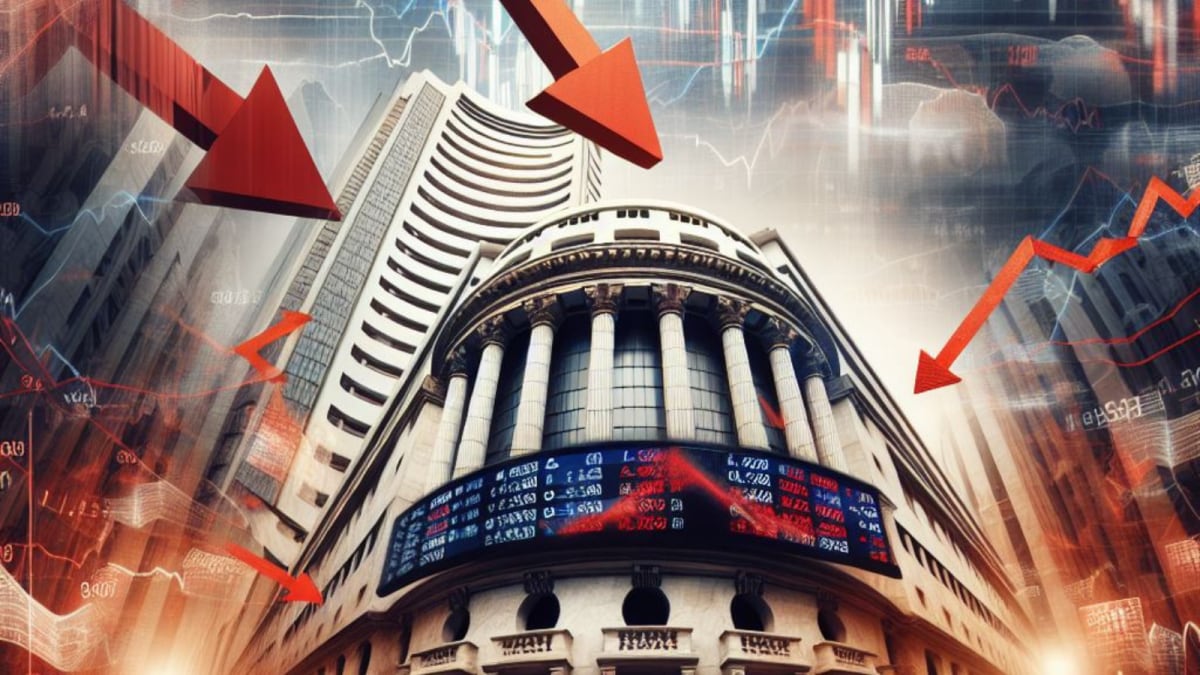Business
Walmart hikes sales and earnings forecast as it attracts shoppers across incomes

A shopper pushes a cart outside a Walmart store in San Leandro, California, US, on Tuesday, Aug. 19, 2025.
David Paul Morris | Bloomberg | Getty Images
Walmart raised its sales and earnings outlook Thursday as the retailer posted revenue gains in its fiscal third quarter, driven by double-digit e-commerce growth and new customers across incomes.
The retailer said it expects full-year net sales to climb between 4.8% and 5.1%, up from its previous expectations of 3.75% to 4.75%. It said it expects its adjusted earnings per share to range from $2.58 to $2.63, a slight raise from its prior range of $2.52 to $2.62.
It marked the second quarter in a row Walmart hiked its full-year forecast.
Walmart’s earnings report is the first since the Arkansas-based company announced a leadership change. The big-box retailer said last week that John Furner, the CEO of its U.S. business, will succeed longtime CEO Doug McMillon on Feb. 1.
In an interview with CNBC, Chief Financial Officer John David Rainey said consumer habits didn’t change during the quarter, as shoppers spent selectively and looked for deals. He said Walmart has gained those “value-seeking” customers across incomes, both because of the economic backdrop and its own strategic moves.
“Consumers are looking to do business with those companies that are providing value, that are delivering the convenience that they’ve come to know and expect, and that are executing consistently well,” he said.
He said Walmart saw an impact from the pause in Supplemental Nutrition Assistance Program, or SNAP, benefits, formerly known as food stamps, during the prolonged government shutdown. But he said “that’s starting to rebound now that people are receiving those funds again.”
Here is what the big-box retailer reported for the fiscal third quarter compared with Wall Street’s estimates, according to a survey of analysts by LSEG:
- Earnings per share: 62 cents adjusted vs. 60 cents expected
- Revenue: $179.50 billion vs. $177.43 billion expected
Walmart also said Thursday that it will transfer the listing of its common stock to the Nasdaq and will begin trading there on Dec. 9. It is currently traded on the New York Stock Exchange. It will have the same stock ticker symbol, “WMT.”
The company’s stock closed Thursday at $107.11, up about 6.5%. As of Thursday’s close, shares of Walmart are up about 19% so far this year. That outpaces the S&P 500’s approximately 11% gains during the same period.
As a retail giant that draws shoppers across incomes, Walmart is closely watched as an indication of the health of the U.S. consumer and how President Donald Trump‘s tariffs are affecting the prices shoppers pay. It can speak to consumer behavior across categories, since it sells discretionary items like makeup and clothes along with necessities like milk and toilet paper.
Walmart has gained more high-income customers as even affluent households sought relief from pricier grocery bills due to high inflation in recent years. That cohort also has responded to store remodels and faster deliveries.
That growth continued in the most recent quarter, Rainey told CNBC. He said Walmart has gained market share across incomes, but “they’re more pronounced in the upper-income segment.”
Some of those shoppers have come to Walmart for speed, Rainey said. The retailer can now deliver to about 95% of U.S. households from stores in under three hours.
Customers now expedite about a third of its online orders from stores to arrive in one- or three-hour timeframes, he said. He said revenue related to those faster deliveries has increased 70% year over year. The company charges a fee for some speedier orders, and others are included as a benefit of its subscription-based membership program, Walmart+.
The expedited delivery service is popular, even with shoppers with lower incomes, he said. During the weeks of November when SNAP benefits were paused, Rainey said Walmart noticed a dip in that volume.
In the three-month period that ended Oct. 31, Walmart’s net income increased to $6.14 billion, or 77 cents per share, from $4.58 billion, or 57 cents per share, in the year-ago period.
Excluding one-time items, such as business reorganization charges, Walmart’s adjusted earnings per share was 62 cents.
Revenue rose from $169.59 billion in the year-ago quarter.
Comparable sales for Walmart U.S. rose 4.5% in the third quarter, excluding fuel, compared with the year-ago period. That surpassed analysts’ expectations of 4% growth, according to StreetAccount. The industry metric, also called same-store sales, includes sales from stores and clubs open for at least a year.
At Sam’s Club, comparable sales rose 3.8%, excluding fuel.
Walmart e-commerce sales grew by 27% globally, as all segments of the company posted sharp gains. In the U.S., e-commerce rose 28%, driven by increases in store-fulfilled delivery of online orders and growth of advertising and its third-party marketplace.
E-commerce sales internationally jumped 26% and at Sam’s Club in the U.S., they rose 22%.
In the U.S., shoppers made more trips to Walmart and spent more on those visits. Customer transactions rose 1.8% and average ticket increased by 2.7%.
As Walmart gains more digital traffic and adds more products to its third-party marketplace, advertising has been a meaningful growth area, too. In the quarter, its global advertising business increased by 53%, including Vizio, the smart TV maker it acquired last year for $2.3 billion. Its U.S. advertising business, Walmart Connect, grew 33% year over year.
Walmart is mulling another acquisition after it expanded its third-party marketplace rapidly in recent years, as it is in talks to buy R&A Data, a startup that works to curb scams and counterfeits, CNBC reported Wednesday.
Like other retailers, Walmart has said it raised prices on some items to offset higher costs from tariffs. About a third of what Walmart sells in the U.S. comes from other parts of the world, with China, Mexico, Canada, Vietnam and India representing its largest markets for imports, Rainey told CNBC in May.
On a call with CNBC on Thursday, Rainey said when it comes to higher tariff costs, “the pressure is real.” Yet, he said Walmart’s team has been able to reduce the impact on customers by finding ways to absorb some costs.
Furner, Walmart’s incoming CEO who currently leads the retailer’s U.S. business, said on the earnings call that there’s been some relief on key food categories, which is helping offset tariff cost pressures. Earlier this month, Trump exempted some major agricultural imports, including cocoa, bananas and coffee, from increased duties as he faced backlash over high prices.
Plus, Furner said the big-box retailer’s wider assortment has helped the company find a balance as it increases prices on some items and lowers them on others. It’s also adjusted its merchandise orders to reduce the risk of markdowns. For example, it’s kept a larger inventory of items for kids, since people tend to prioritize their families even when they feel financial pressure, he said.
Walmart’s gains in non-food categories, which tend to be higher margin, have also helped. Sales of fashion, a category that includes apparel, shoes, jewelry and accessories, grew more than 5% in the quarter compared to the year-ago period, he said.
Walmart’s results on Thursday followed cautious updates from Target, Home Depot and Lowe’s. All three of those retailers lowered their full-year profit outlooks this week and referred to consumers who were hesitant to make big purchases and hungry for deals.
T.J. Maxx and Marshalls parent company TJX, on the other hand, hiked its full-year forecast, saying it’s seeing a “strong start” to the holidays as it caters to value-conscious shoppers.
Rainey said Walmart is “going into the holiday pretty optimistic,” saying it’s prepared with competitive price points.
Business
How MSMEs Are Upgrading To Modern Tech For Lifting Indias Productivity

New Delhi: As India’s manufacturing ecosystem accelerates toward greater scale and sophistication, factories are increasingly turning to modern material-handling technologies to stay competitive. Manual load movement once the norm on most shop floors is no longer sufficient for today’s high-volume, fast-paced production demands. Manufacturers are now embracing advanced solutions such as Electric Overhead Travelling (EOT) cranes to save time, improve workflow management, and unlock higher productivity.
With automation, digital controls, and precision-engineered systems becoming more accessible, these cranes are helping industries streamline operations, reduce downtime, and enhance workplace safety, making them indispensable tools for the next generation of smart factories. EOT cranes, commonly visible in workshops and industrial sheds, play a vital role in lifting and transporting materials with precision. With rising production volumes, tighter delivery schedules and stricter safety norms, industries are adopting these systems to reduce physical strain on workers and streamline day-to-day operations.
A key driver behind this growing adoption is the emergence of Indian manufacturers who design cranes suited to local factory environments. Over the past three decades, companies such as LOADMATE have supplied EOT cranes, electric chain hoists and wire rope hoists to a wide range of sectors, from engineering and fabrication to textiles, chemicals and heavy manufacturing. Their familiarity with local usage conditions has resulted in systems that are robust, economical to maintain and aligned with Indian industrial requirements.
According to Manish Agarwal, CEO of LOADMATE, customization has become an important factor in equipment selection. “Every factory has its own layout, workflow and load-handling needs. When lifting systems are designed around these specific conditions, the result is better efficiency and better safety. Indian manufacturers are able to understand these needs more closely. The availability of service teams and spare parts within the country also gives long-term confidence to plant owners,” he said.
According to experts, imported cranes are often harder to service and more expensive to modify. For MSMEs operating on tight schedules, local manufacturers have filled a crucial gap by offering solutions tailor-made for load capacities, spans, duty cycles and operational environments. This allows factories to upgrade without major alterations to infrastructure, making the transition more cost-effective.
This shift mirrors a larger nationwide trend. As Indian factories adopt leaner processes and modern automation, reliable lifting systems have become integral to improving throughput and reducing downtime. The preference for domestically built cranes has also helped minimize delays related to maintenance and spare parts availability, challenges that previously disrupted production cycles.
Business
Why Did Stock Market Fall Today? Key Factors Behind Sensex, Nifty Decline On November 21

Last Updated:
Equity benchmark indices slip on Friday, ending a two-day winning run, as weak global cues dampened investor sentiment.
Why Is Stock Market Down Today?
Equity benchmark indices slipped on Friday, ending a two-day winning run, as weak global cues dampened investor sentiment. The BSE Sensex declined 400.76 points to settle at 85,231.92, while the NSE Nifty fell by 124 points to end the day at 26,068.15.
Among the 30 Sensex shares, 17 stocks closed in the red. Among the top losers were Tata Steel, Bajaj Finance, HCL Tech, Bajaj Finserv, and BEL falling by up to 2.58%. On the other hand, the gainers were Maruti Suzuki, Mahindra & Mahindra, Tata Motors PV, ITC, and Asian Paints rising by up to 1.17%.
Key factors behind Friday’s market decline
1. Nifty Metal index slides
The Nifty Metal index fell 1.4% after the government extended exemptions from mandatory quality-control rules for certain steel and stainless-steel grades — a move expected to increase imports and pressure domestic prices. Except for Adani Enterprises, all constituents traded lower, with Hindalco leading the decline.
Hindalco was also the top loser on the Nifty 50, dropping over 2% to ₹783.45, after a fire at its Novelis aluminium plant in Oswego, New York, on November 21. Novelis — which contributes nearly 60% of Hindalco’s revenue — had already recorded a $21 million charge in Q2 due to an earlier fire. The Oswego unit supplies aluminium for Ford’s F-150 truck line.
2. Selling pressure hits IT stocks
IT shares also declined as concerns over stretched valuations resurfaced. The slump in US tech stocks overshadowed Nvidia’s better-than-expected quarterly results, adding further pressure to domestic IT counters.
3. Weak global cues
Asian markets were broadly lower on Friday, tracking the sell-off on Wall Street. South Korea’s Kospi plunged more than 3%, while Japan’s Nikkei 225 slipped over 2%. Markets in Shanghai and Hong Kong also opened weak, extending the negative global sentiment. Overnight in the U.S., all major indices closed in the red, with the Nasdaq Composite falling 2.15%, the S&P 500 down 1.56%, and the Dow Jones Industrial Average losing 0.84%.
Currency movements further weighed on sentiment. The yen hovered near a 10-month low, though it saw a brief rebound after Japanese Finance Minister Satsuki Katayama hinted at possible intervention to limit excessive volatility. The U.S. dollar continued to strengthen and was on track for its strongest week in more than a month. Meanwhile, Japan’s latest stimulus package is projected to have an overall economic impact of $265 billion, adding another factor for markets to consider.
4. Fading hopes of a U.S. rate cut
Renewed uncertainty over US monetary policy also weighed on sentiment. Stronger-than-expected September job growth reduced the likelihood of a December rate cut. Higher U.S. rates typically pull capital away from emerging markets like India.
Adding to the caution, Federal Reserve Governor Lisa Cook, in a speech at Georgetown University, flagged risks to the financial system — including the rapid expansion of private credit and hedge-fund activity in the Treasury market — without providing clarity on near-term rate moves.
5. Volatility spikes
The India VIX jumped 13% to 13.68, signalling heightened uncertainty and potential for wider market swings.
Despite the early decline, analysts noted that markets remain close to record highs, and buying on dips could emerge later in the session, supported by improving earnings and firm domestic flows.
Nifty Technicals
On the technical front, Anand James, Chief Market Strategist at Geojit Financial Services, said the breakout above a month-long range keeps Nifty’s 26,550 target intact. However, Thursday’s move above the upper Bollinger band — followed by a close below — points to limited upside in the near term.
A failure to hold above 26,237 or a drop below 26,160 could shift momentum to the bears, with downside levels at 26,028–25,984, he added.

Aparna Deb is a Subeditor and writes for the business vertical of News18.com. She has a nose for news that matters. She is inquisitive and curious about things. Among other things, financial markets, economy, a…Read More
Aparna Deb is a Subeditor and writes for the business vertical of News18.com. She has a nose for news that matters. She is inquisitive and curious about things. Among other things, financial markets, economy, a… Read More
November 21, 2025, 11:19 IST
Read More
Business
NFC Meeting on December 4 to Deliberate IMF Terms and Latest Award – SUCH TV

A meeting of the National Finance Commission (NFC) has been scheduled for December 4 to discuss the implementation of IMF conditions and the new financial award.
According to sources, the meeting will focus on IMF proposals regarding changes to the NFC Award. To consult on the matter, the federal government has invited all provinces to attend the session.
Federal Finance Minister Muhammad Aurangzeb, along with the finance ministers of the four provinces, is expected to participate in the meeting.
The IMF is anticipated to support the proposals for the new National Finance Award. Sources indicated that if multiple sessions are required to finalize the award, the process could take six to eight months.
The first scheduled NFC meeting had earlier been postponed at the request of the provinces due to flood-related disruptions.
Separately, the International Monetary Fund (IMF) highlighted that corruption remains a persistent challenge in Pakistan, urging the Special Investment Facilitation Council (SIFC) to publish its first annual report.
In its Governance and Corruption Diagnostic Assessment (GCDA), the IMF stated that corruption poses serious risks to economic development and public trust.
The Fund called on the government to enhance transparency, strengthen governance structures, and immediately begin implementing a comprehensive reform agenda.
According to the report, the IMF has called on the SIFC to develop clear protocols for its operations and significantly improve transparency to ensure effective oversight and accountability.
It further recommended that the SIFC must publish its first annual report, detailing all investment deals it has facilitated, including any tax, policy, regulatory, or legislative concessions granted—along with the full rationale and the monetary value of each concession.
-

 Tech6 days ago
Tech6 days agoNew carbon capture method uses water and pressure to remove CO₂ from emissions at half current costs
-

 Politics1 week ago
Politics1 week agoBritish-Pakistani honoured for transforming UK halal meat industry
-

 Business6 days ago
Business6 days agoThese 9 Common Money Mistakes Are Eating Your Income
-

 Sports6 days ago
Sports6 days agoTexas A&M officer scolds South Carolina wide receiver after touchdown; department speaks out
-

 Business7 days ago
Business7 days agoWhat’s behind Rachel Reeves’s hokey cokey on income tax rises?
-

 Sports7 days ago
Sports7 days agoApple scrapping MLS Season Pass service in ’26
-

 Fashion1 week ago
Fashion1 week agoAfter London, Leeds and Newcastle, next stop Glasgow for busy Omnes
-

 Tech1 week ago
Tech1 week ago$25 Off Exclusive Blue Apron Coupon for November 2025





)
)





